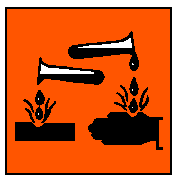International Chemical Safety Cards
| TRIETHYLENETETRAMINE | ICSC: 1123 |
| TRIETHYLENETETRAMINE N,N'-Bis(2-aminoethyl)ethylenediamine 3,6-Diazaoctane-1,8-diamine 1,4,7,10-Tetraazadecane C6H18N4 Molecular mass: 146.3 CAS # 112-24-3 RTECS # YE6650000 ICSC # 1123 UN # 2259 EC # 612-059-00-5 |
 |
| TYPES OF HAZARD/ EXPOSURE |
ACUTE HAZARDS/ SYMPTOMS |
PREVENTION | FIRST AID/ FIRE FIGHTING |
| FIRE | Combustible. |
NO open flames. NO contact
with oxidants. |
Powder, alcohol-resistant
foam, water spray, carbon dioxide. |
| EXPLOSION | Risk of fire and explosion
on contact with oxidants. |
|
|
| EXPOSURE | |
PREVENT GENERATION OF
MISTS! AVOID ALL CONTACT! |
|
| INHALATION | Burning sensation. Cough.
Laboured breathing. |
Ventilation, local exhaust,
or breathing protection. |
Fresh air, rest.
Half-upright position. Artificial respiration if indicated. Refer for medical attention. |
| SKIN | Redness. Pain. Blisters. |
Protective gloves.
Protective clothing. |
Remove contaminated
clothes. Rinse and then wash skin with water and soap. Refer for medical attention. |
| EYES | Redness. Pain. Severe
deep burns. |
Face shield or eye
protection in combination with breathing protection. |
First rinse with plenty of
water for several minutes (remove contact lenses if easily possible), then take to a
doctor. |
| INGESTION | Abdominal pain. Burning
sensation. Weakness. |
Do not eat, drink, or smoke
during work. |
Rinse mouth. Do NOT induce
vomiting. Give plenty of water to drink. Refer for medical attention. |
| SPILLAGE DISPOSAL | STORAGE | PACKAGING & LABELLING | ||
| Collect leaking and spilled
liquid in sealable containers as far as possible. Wash away remainder with plenty of
water (extra personal protection: complete protective clothing including self-contained
breathing apparatus). |
Separated from strong
oxidants, strong acids, acid chlorides, acid anhydrides and other incompatible substances.
Cool. Well closed. Keep in a well-ventilated room. |
C symbol R: 21-34-43 S: 26-36/37/39 UN Hazard Class: 8 UN Packing Group: II |
||
| SEE IMPORTANT INFORMATION ON BACK | ||||
|
||||